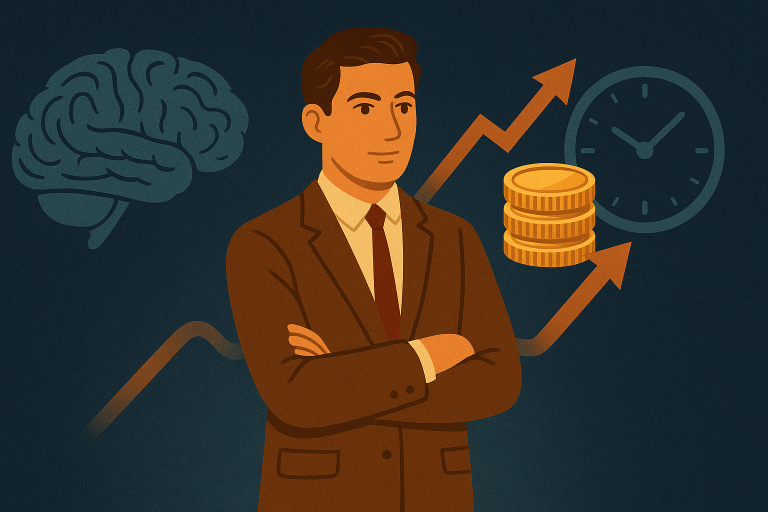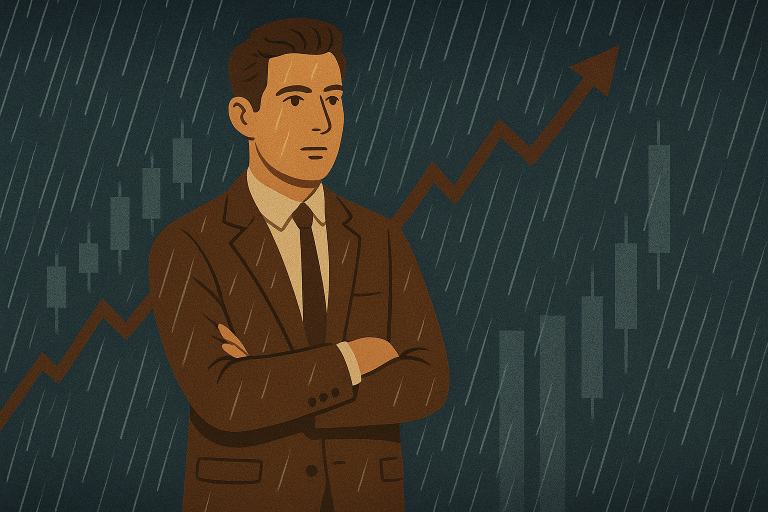How Past Losses Prevent People From Investing
The most powerful barrier preventing people from becoming investors isn’t lack of money, knowledge, or market access—it’s the psychological pain of previous financial losses. This deep-seated pain paralyzes forward movement and creates invisible boundaries that keep millions from achieving financial independence.
The Anatomy of Financial Trauma
Anyone who has lost money remembers the visceral reaction: accelerated heartbeat, cyclical thoughts of self-blame, and lingering regret. Financial losses strike deeper than portfolio numbers—they impact self-esteem, personal confidence, and our sense of control. This emotional imprint becomes a subconscious guide, causing people to remember pain rather than opportunity when subsequent investment chances arise.
How Fear Becomes a Financial Strategy
Most people live governed by past pain rather than future potential. Their financial decisions form around protection rather than growth, around excuses rather than opportunities. The statement “I don’t invest because it’s too risky” often masks the deeper truth: “I won’t invest because I’m protecting myself from re-experiencing past pain.” This avoidance strategy feels safer but ultimately costs more than any single market loss.
Common Psychological Barriers After Financial Loss
- Hyper-risk aversion: Overestimating dangers while underestimating opportunities
- Confidence erosion: Doubting personal judgment across all financial decisions
- Emotional anchoring: Associating investing exclusively with past negative experiences
- Perfectionism paralysis: Waiting for “perfect” conditions that never arrive
The Long-Term Investor’s Perspective on Pain
Successful investors develop a different relationship with financial pain. They recognize losses not as verdicts on their capability but as essential lessons in their education. While mistakes carry real costs, they also build resilience that cannot be acquired through theoretical learning alone. When you learn to view financial pain as a teacher rather than an enemy, it loses power over your decisions.
The Greater Loss: Inaction’s Heavy Price
Consider which scenario creates more suffering: losing modest amounts while pursuing wealth, or losing everything because you never began? Most people avoid this question, yet its answer determines financial futures. The pain of temporary portfolio declines pales against the lifelong regret of missed opportunities and compounded inaction.
Transforming Pain Into Fuel
Wealth builders rarely discuss their emotional journeys, but every successful investor carries scars from dozens of errors, drawdowns, and failed decisions. The critical difference lies in their response—they use pain as propulsion rather than allowing it to become permanent obstruction. They understand that financial growth requires accepting discomfort as part of the process.
Reclaiming Your Financial Future
Remember: the pain of losses represents an inevitable part of wealth building. It tests your commitment to financial growth. If you surrender to it, pain becomes your master. If you accept and learn from it, pain transforms into your ally. Each subsequent step then becomes an act of strength rather than fear.
Don’t allow past pain to foreclosure your financial future. Let it remind you to invest wisely—but necessarily. The discomfort of a single loss will fade, while the agony of decades lost to inaction becomes permanent. Your financial freedom awaits on the other side of temporary discomfort—the question is whether you’ll allow past pain to keep you from crossing that bridge.
True investors aren’t those who never experience loss—they’re those who refuse to let loss experiences define their financial destiny. The market’s greatest rewards often go to those courageous enough to face their financial fears and invest despite them.



